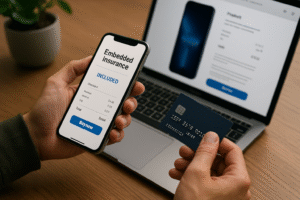How to apply for new platforms for p2p lending
Learn step by step how to register and use new peer to peer (P2P) lending platforms, from choosing the platform to managing.

Peer to peer (P2P) lending has grown significantly in recent years, offering a digital alternative to traditional financial institutions. Whether you’re an investor or someone looking for credit, getting started on a P2P lending platform requires a few key steps.
Below, you’ll find a comprehensive guide to signing up and using new platforms safely and effectively. Read on to find out more!
1. Understand What P2P Lending Is
Before signing up for any platform, it’s essential to understand what P2P lending involves. In short, it’s a model where investors lend money directly to individuals or businesses through online platforms, eliminating traditional intermediaries like banks.
Borrowers often get access to better interest rates, while investors may earn higher returns than they would with conservative investments. However, the risk is also higher.
The platforms act as intermediaries, organizing the loans, performing credit assessments, and managing payments.
2. Choose the Right Platform for Your Needs
The next step is to choose the right platform based on your goal. Some are designed for investors, others for borrowers, and some serve both.
Ask yourself if you’re looking to invest or request a loan. Evaluate the fees charged, minimum deposit requirements, the company’s reputation, the type of loans offered (personal, business, educational, etc.), and whether the platform operates legally in your country.
Well-known platforms include LendingClub, Mintos, Bondora, and Funding Circle, as well as local options regulated by national financial authorities.
3. Check Platform Requirements
Each platform has specific criteria for accepting users. For those seeking a loan, it’s common to require a minimum credit score, proof of income, identity documents, and proof of residence in the country where the platform operates.
Investors are usually required to provide identification, bank details, and sometimes prove income or fill out an investor profile questionnaire. In certain jurisdictions, only accredited or qualified investors can participate in specific offerings.
4. Register and Create an Account
The registration process is usually done online and starts with entering basic details such as full name, email, phone number, and a government-issued ID.
Then you’ll need to provide additional information, like proof of address and bank account details.
More complete platforms may also ask you to build a financial profile, detailing your investment experience and financial goals. This helps personalize the experience and ensure product suitability.
5. Verify Your Identity
To ensure security and comply with legal requirements, most platforms require identity verification. This may include uploading a photo of your ID, a selfie for facial recognition, or even a live video to confirm that a real person is creating the account.
Additional documents such as bank statements or income proof may also be required. This process can take anywhere from a few minutes to a few days, depending on the platform’s technology.
6. Set Up Your Profile and Preferences
After verifying your identity, you can set up your profile. Borrowers will need to fill out a form with the desired loan amount, repayment term, and loan purpose.
Some platforms allow you to make your profile more transparent to attract investors by sharing additional personal and professional details.
Investors, in turn, can set preferences such as acceptable risk levels, industries of interest, maximum amounts per loan, and enable automated investment tools to facilitate portfolio diversification.
7. Review Fees and Agreements
Before completing your registration and using the platform, it’s essential to review all terms and conditions. Pay close attention to fees, which may include administration, origination, early repayment, or late payment penalties. Read the contracts carefully, especially regarding what happens in case of default.
For investors, it’s also important to understand how income will be taxed, particularly if the platform operates across borders.
9. Monitor and Manage Your Account
Once you’re active on the platform, it’s crucial to keep a close eye on your account. Investors should monitor their loan portfolio performance, track payments, and strategically reinvest earnings.
Borrowers must stay on top of their installment due dates, avoid delays, and use support channels in case of issues. Many platforms offer charts, reports, and automatic alerts to help users manage their accounts more easily and ensure a positive experience for both sides.
Final Thoughts
Getting started with a P2P lending platform is a relatively simple process, but it requires attention to detail and financial responsibility.
Choosing the right platform, knowing your rights and responsibilities, and understanding the risks involved are key steps to safely benefiting from this model.
Whether you’re looking for more affordable credit or to diversify your investments, P2P lending can be an excellent option, when used with awareness and care.






